CANADA
Plants and Animals

Plants and Animals

Cities in CANADA
| Montreal | Ottawa | Vancouver |
Popular destinations CANADA
| Alberta | British columbia | Manitoba |
| New brunswick | Newfoundland and labrador | Northwest territories |
| Nova scotia | Nunavut | Ontario |
| Prince edward island | Quebec | Saskatchwan |
| Yukon |
Plants and Animals
Plants
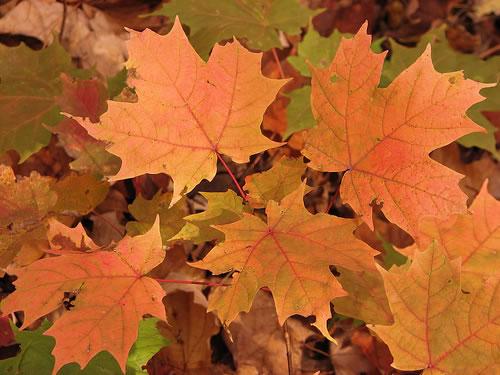
Given the vast area of the country, the flora of Canada is relatively poor: 7000 to 7500 species of vascular plants on approx. 9,960,000 km2 and in the relatively rich province of Québec still only 2,200 species on 1,480,000 km. For comparison: France has 3900 species, Spain 4500 species, and both on only about 540,000 km2. This is due to the severe climate and the even natural condition. The northern half of Canada is occupied by virtually tree-free tundra vegetation. The tundra is dominated by permafrost, on which only the strongest flora grow, such as lichens and very tough flower and grass varieties. These extend on the east and west coast to far south; Southeast Labrador, for example, lies on the width of England, still north of the tree line; in contrast, the forest in the continental center extends above the Arctic Circle. The arctic vegetation is certainly not monotonous and poor in species. Especially in the north and further in dry and continental climates and on lime soil, a field of many colorful flowering plants is considering; in the southern Arctic, dwarf shrubs predominate and in sheltered gorges, you will find groves of birch species.
Practically the entire southern half of Canada consists of boreal pine forests with pine, spruce and life trees. Large expansive forests gradually turn into peat bogs, which are distinguished from European bogs by, among other things, a shrub floor of mainly heather species, usually called 'Indian tea'.
The western coastal area and the southeast deviate from this pattern. In the western coastal area, in addition to the same vegetation in the United States of America, up to 100 m high forests of the spruce Picea sitchensis and, higher on the mountains, the alasac cedar (Chamaecyparis nootkatensis). In the relatively warm southeast, near the Great Lakes and the St. Lawrence, there are also real deciduous forests via a wide zone with coniferous and deciduous trees. It is special that in addition to many boreal species, there are also many genera known mainly from the tropics, such as the whip tree and millet. The most species-rich forest type, growing on the richest soils, is the beech maple forest with beech and the white maple or maple, very similar to the European oak hornbeam forests. American oak grows on poorer and drier soil, and ash forests on moist and fertile soils. The southern Canadian forests are especially famous for their beautiful autumn colors, the 'Indian Summer'. Where these forests have been cleared, hedge landscapes were created, in which hawthorn has become increasingly common during the past centuries.
Animals
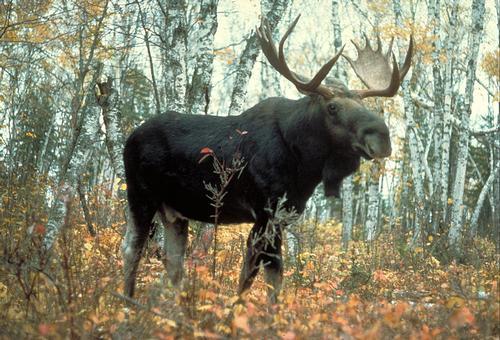
Canada belongs to the animal geographic realm Arctogaea in which one can distinguish again: the arctic fauna and the nearctic fauna. The boundary between the two is the tree line, which runs north to the north of the Arctic Circle, but more to the east to Labrador. One species endemic to the Arctic is the musk ox, which is still quite common in the larger Canadian islands, but also found on the mainland and protected in some reserves. The polar bear also occurs here. The tundra is inhabited by the gray wolf, the arctic fox, the caribou (the American reindeer), the snow hare and the lemming. Also birds such as snow bunting, linnet, pipits and alpine lark.
In the nearctic part of Canada we see predators such as the cougar, the lynx, the grizzly bear, the black bear or baribal, the raccoon, the wolf and foxes; and furthermore martens, wolverine and otter. The ungulates may mention the forest bison, the bighorn sheep, the deer deer in many places in the west, as well as the mule deer; the white-tailed deer lives in southern Canada. The moose or "moose" still has a large distribution area.
Found only in the Southwest, the gaff antelope is the only antelope species remaining in North America. The mountain sheep, like the snow goat, inhabits only the far west of Canada. The rodents are represented by prairie dogs, lemmings, squirrels, flying squirrels, porcupines, muskrat and the beaver, the national symbol of Canada.
Of the birds, the trumpet crane and the ice diver deserve special mention. In the rivers and lakes live pike and trout; the Atlantic salmon pulls up the rivers in Labrador.
The coasts of the Atlantic provinces provide a rich, varied habitat for coastal and marine animals. Countless terrestrial and marine mammals and hundreds of species of seabirds live here, such as the pipit plover, a small endangered riparian bird, otters, beavers, bottlenose dolphins, raccoons, blue whales, puffins, Atlantic salmon, razorbill cormorants and the fuly petrel.
The first national park, Banff, was established in 1885. Now there are 40 national parks, approx. 1200 provincial parks and about 100 natural history monuments. Some parks have a huge area, Wood Buffalo National Park covers an area larger than Switzerland.
Details by province
ALBERTA
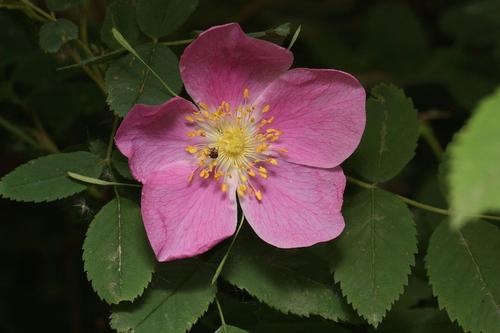 Alberta Wild RosePhoto: Walter Siegmund CC 3.0 Unported no changes made
Alberta Wild RosePhoto: Walter Siegmund CC 3.0 Unported no changes made
Southeast of Drumheller, UNESCO established Dinosaur Provincial Park in 1955. This World Heritage Area contains the richest fossil beds in the world. More than 300 important discoveries have been made here.
Elk Island National Park is home to large mammals such as the wapiti, the steppe bison and the endangered forest bison.
Wood Buffalo National Park is Canada's largest national park and was declared a World Heritage Site in 1983 by UNESCO because of its rare wildlife like the forest bison. Peregrine falcons and the bald eagle are also found here and it is the only natural breeding ground in the world for the rare trumpet crane.
The Waterton Lakes National Park is home to the richest wildlife of all Canadian parks, from bears to bighorn sheep and from waterfowl to saplings.
In Banff National Park, many animal species can be seen in their natural environment: mountain goats, bighorn sheep, deer, black bears, grizzly bears, and elk. The lower slopes are covered with dense forests of pine, silver fir, and some Douglas fir. At higher altitudes, these species are supplanted by fir trees and the Engelmann fir. At 2135 meters altitude there is a semi-arctic climate where many colorful alpine flowers still bloom.
The flora in Banff and Jasper National Park include 996 vascular plants (trees, grasses and flowers), 407 lichens, 243 mosses and 53 liverwort.
Saskatoon Island Provincial Park is one of the nesting areas of the rare Trumpeter Swan.
The Alberta plant symbol has been the wild rose (Rosa acicularis) since 1930. The wild rose, which can grow up to 1.5 meters, blooms in Alberta from late May to early August. The flowers of the wild rose are pink in color, with a diameter between 3-5 centimeters.
BRITISH COLUMBIA
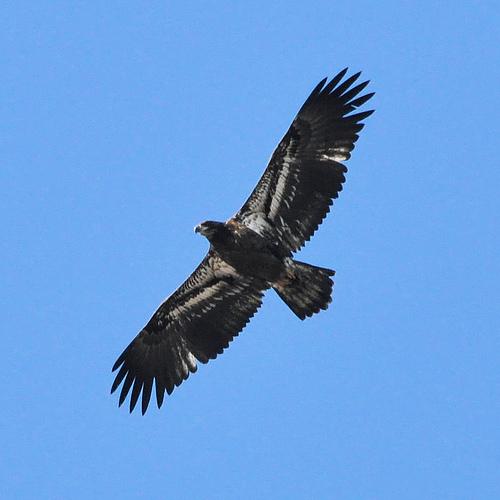 White-tailed eaglePhoto: Littleisland lighthouse CC 2.0 Generic no changes
White-tailed eaglePhoto: Littleisland lighthouse CC 2.0 Generic no changes
In the temperate climate British Columbia, more plant and animal species live together than in the rest of the country, especially in the coastal region. The province also includes the driest and wettest areas of Canada.
Beacon Hill Park on Vancouver Island features rare oak trees of the Quercus garriana species, some of which are over 400 years old.
Black temperate deer, mule deer, black bears, the related silver bears, and cougars are found in the temperate rainforest, with Douglas firs that can grow to over 90 meters high and 500 years old. Trumpeter swans live in the swamps, lakes and rivers.
The sea around the Queen Charlotte Islands is home to the largest population of bald eagles in all of British Columbia. The Queen Charlotte Islands are ecologically very rich and there are many so-called relics, including "deer mouse" (Peromyscus maniculatus), Lairy woodpecker and black bear. Howser, on the north side of Kootenay Lake is home to North America's largest colony of ospreys, about 100 pairs. Kootenay National Park has a wide variety of habitats. In the valley of the Kootenay River lie alpine meadows and moist coniferous forests, while cacti and disc cacti grow in the warm Rocky Mountain Trench.
The small and shy harlequin ducks can be found in fast-flowing rivers and in the surf of the ocean. The George C. Reifel Waterfowl Refuge on Westham Island overwinters Canada's largest population of waterfowl, more than 240 species, including snow geese.
There are five types of salmon in the Pacific Ocean near British Columbia: chinook (max. 55 kg), chum (max. 5 kg), coho (max. 10 kg), pinky (max. 2.5 kg) and sockeye (max. 3.5 kg). There is a wide variety of freshwater fish: rainbow, lake and brown trout are found in the southern southern lakes of Central British Columbia, while the Peace River Area mainly fishes for Siberian grayling and pike.
Orcas, sea otters, seals, Steller sea lions and more than 20 species of whales, including humpback whales and gray whales, can be found in the warm waters of the northern Pacific. North of Vancouver Island, in the Johnstone Strait, about 300 killer whales live in the summer.
"Great mayors", a large gray-and-white gull species, nest on the rock walls and on the many islands along the coast.
The Cranbrook area is home to monkeys, wolves, cougars, and grizzly bears. The rare orchid species Cypipedium can be found in the swamps of Muncho Lake Provincial Park. Black bears, deer, moose, coyotes and lynx are found around Lake Shuswap.
The Gwaii Haanas National Park Reserve encompasses ancient rainforest including 1000 year old Sitka spruce trees. Stanley Park in Vancouver is a beautiful forest of cedars, Canadian pines and Douglas firs, and is the largest urban park in North America with more than 400 hectares.
The plant symbol of British Columbia is the Canadian dogwood.
MANITOBA
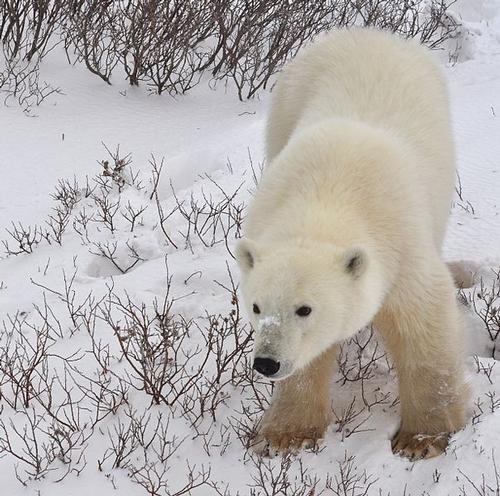
The swampy area of Grand Beach Provincial Park is home to many bird species, including the rare and endangered piping plovers. Bird species such as the teal and the Ammospiza caudacuta, a special species of sparrow, live in the Oack Hammock Marsh.
The Narcisse Wildlife Management Area has been specially established to safeguard the habitat of the thousands of garter snakes. An evergreen spruce and pine forest in Riding Mountain National Park is home to moose, elk and a small herd of bison. On the east side of the park, elms, oaks and maples grow to provide shelter for a rich undergrowth of shrubs, vines and ferns, a habitat that is rarely seen in the prairies.
Churchill is also known as the "Polar Bear Capital of the World". By the fall of autumn, the polar bears migrate to the bay east of Churchill, and some 150 migrate through the town.
Between June and September, about 3,000 beluga whites or white dolphins gather in the mouth of the Churchill River.
Spruce Woods Provincial Park is home to rare animals such as hook-nosed snakes, garlic toads, and northern prairies skinks.
The plant symbol of Manitoba is the prairie crocus.
NEW BRUNSWICK
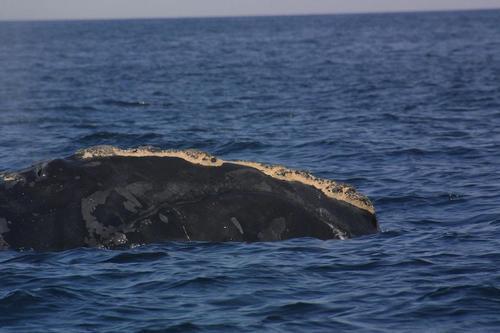
Fundy Bay is very nutrient-rich, attracting the largest whale population in the world, including humpback whales, minke whales, fin whales, even the rare northern right whale, as well as fringe-legged, shearwater and gull birds.
Most of the Fundy National Park territory is forested with spruce, pine, maple and beech trees. The wildlife includes the moose, hare, beaver, red squirrel and raccoon.
The dunes at Bouctouche offer protection to rare plants, vulnerable wetlands and an endangered plover species.
NEWFOUNDLAND
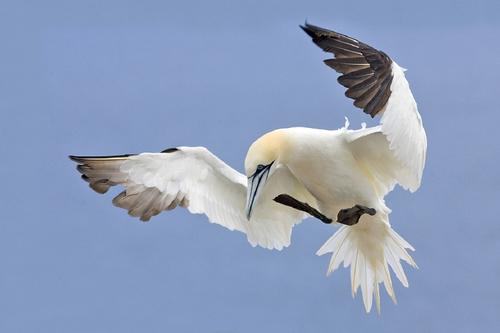 Northern gannet CanadaPhoto: Alan D. Wilson in the public domain
Northern gannet CanadaPhoto: Alan D. Wilson in the public domain
At the southern end of the Avalon Peninsula is Cape St. Mary's Ecological Reserve, the only seabird breeding colony in the county, home to approximately 8,000 gannets, among others. The islands of the Witless Bay Ecological Reserve are home to numerous seagulls, razorbills, guillemots, kittiwakes and especially puffins, one of the symbols of Newfoundland.
The 700,000 caribou of the George River herd live in the Welsh Labrador wilderness.
The vast coniferous forests are home to fur animals such as the fox, mink, beaver, squirrel and otter, as well as lynx, moose and black bear. The rivers are full of salmon and trout.
There are 350 plant species in the Terra Nova National Park, including various rare marsh orchids.
Gros Morne National Park is a narrow plain of mixed forest and swamp where orchids and pitcher plants, the provincial flower of Newfoundland and Labrador, bloom.
NORTHWEST TERRITORIS
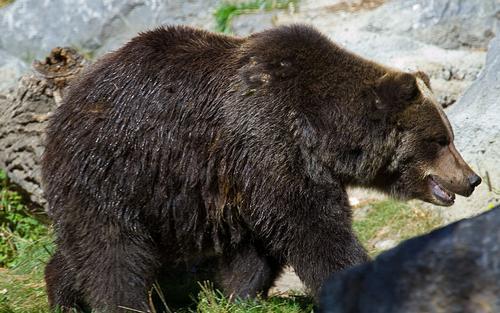
Near Virginia Falls in the Nahanni National Park Reserve, 13 species of fish, over 120 species of birds, as well as wolves, grizzly bears, Dall's sheep, and western Canadian forest caribou are found.
The Mackenzie Bison Sanctuary in Wood Buffalo National Park is home to the largest herd (approx. 2,000) of rare forest bison in the world. Banks Island is home to the largest herd of musk ox in the world, in Aulavik National Park (approx. 18,000 copies). The strange long-haired musk ox is found on Melville Island.
The Northern Frontier region has the largest caribou herd in NWT at over 400,000.
Snow geese, arctic foxes and polar bears can be observed in Auyuittuq National Park, one of the few national parks above the Arctic Circle.
The wooded regions of the Territories are home to many wolves, foxes, lynx, otter, beavers, rabbits and other small animals.
The plant symbol of the Northwest Territories is the ragwort.
NOVA SCOTIA
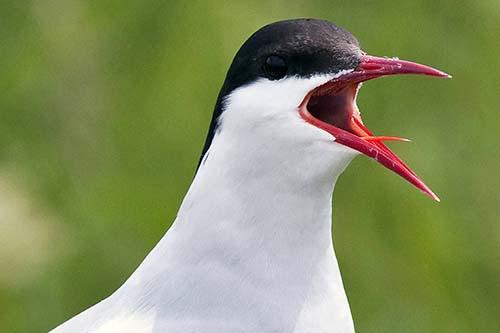 Arctic tern CanadaPhoto: Public domain
Arctic tern CanadaPhoto: Public domain
Digby is the fishing place where the main catch is the scallop. The coastal waters of Long Island and Brier Island are infested with fin whales, minke whales, humpback whales and the rare northern right whales.
Lake Ainslee attracts numerous birds, including ospreys and ice divers.
Cape Smokey and Tern Rock, on the Middle Headland headland, is a breeding ground of common terns and Arctic terns.
NUNAVUT
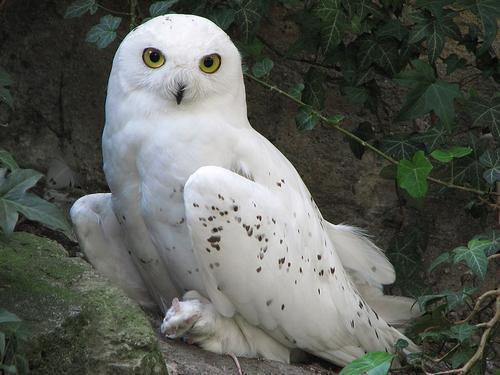
Of the more than 4,000 animal species on Earth, less than 50 live all or part of their life in the Arctic, and only 31 of them live in the Canadian Arctic.
Most polar animals in Canada are rodents that live near the tree line or on the tundra. More famous are the large animals that most people associate with the Arctic, such as polar bears, musk oxen and wolves. Most birds in this area fly to warmer areas when winter sets in. Standing birds include the snowy owl and the snow grouse.
Grasses, sedges, heather plants and dwarf willows grow in the Aulavik National Park.
A bird sanctuary has been established on Bylot Island to protect the rock walls where 300,000 guillemots and 80,000 kittiwakes breed. The waters of Pond Inlet are home to walruses, beluga whales, Greenland whales, narwhal, killer whales, various seals and polar bears.
Arctic foxes, hares, caribou, peregrine falcons, vulture falcons and bush-legged buzzards are found in the Katannilik Territorial Park waterfall area.
ONTARIO
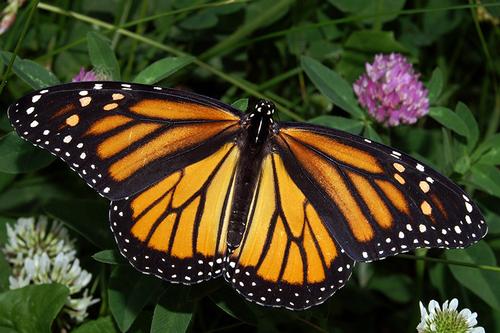 Monarch butterfly CanadaPhoto: Kenneth Dwain Harrelson CC 3.0 Unported no changes made
Monarch butterfly CanadaPhoto: Kenneth Dwain Harrelson CC 3.0 Unported no changes made
In the Point Pelee National Park, the many different tree species form a jungle-like whole, including cedar virginia, black walnut, white sassafras, hickory, maple and sumac. Thousands of birds perch here during the spring and autumn migration. More than 350 species have been seen in the park. In autumn, clouds of monarch butterflies flutter around. Other national parks include Georgian Bay Islands, Pukaskwa, St. Lawrence Islands, Bruce Peninsula, and Fathom Five.
One of the largest lakes in Algonquin Provincial Park, Lake Opeongo is teeming with American salmon trout, black bass, and farmed splake. Ice divers, belonging to the oldest surviving bird family, are still abundant on the water surface of the park's more than 2,500 lakes.
Lush forests of yellow birches, red and white Trilliums, sugar maple trees and velvet trees grow on many islands of the Thousand Islands.
PRINCE EDWARD ISLAND
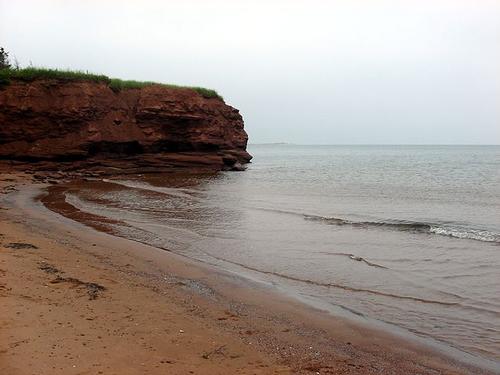 Red sandstone in Cabbot Beach Proncial Park, Prince Edward IslandPhoto: Qyd CC 3.0 Unported no changes made
Red sandstone in Cabbot Beach Proncial Park, Prince Edward IslandPhoto: Qyd CC 3.0 Unported no changes made
Cabot Beach Provincial Park occupies part of Malpeque Bay, where approximately 10 million famous Malpeque oysters are caught each year. There is also a lot of lobster, halibut, cod, tuna, herring and mackerel.
There is no big game on the island, but there is beaver, fox, mink, squirrel, raccoon and weasel.
The most famous birds are the partridge, pheasant, black grouse and especially many waterfowl. Moore's Migratory Bird Sanctuary is a protected area visited by numerous migratory birds.
QUEBEC
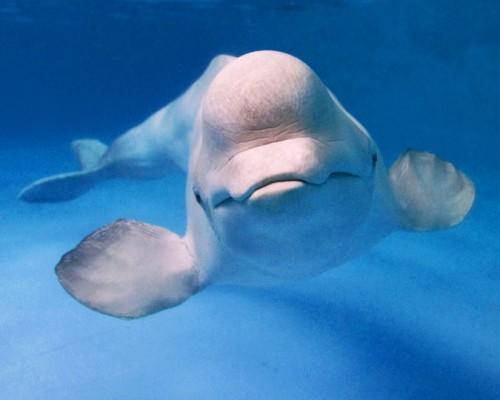 Beluga or white dolphin CanadaPhoto: Premier.gov.ru CC 4.0 International no changes made
Beluga or white dolphin CanadaPhoto: Premier.gov.ru CC 4.0 International no changes made
A colony of belugas or white dolphins lives in the estuary at Tadoussac, accompanied in the summer by minke whales, humpback whales, blue whales and fin whales. The Ile du Corossol is a bird sanctuary with gulls, terns and puffins. Gray and harbor seals and harp seals often gather in the bays of the Mingan Archipelago Wildlife Park.
At the end of the 19th century, a herd of white-tailed deer or Virginia deer were released on the Ile d'Anticoste, which has now grown to approximately 120,000. The Faunique La Vérendrye Game Reserve is home to large numbers of moose, beavers, deer and bears. Can be fished for American zander, pike, lake trout and perch. Île Bonaventura near Percé is home to the largest gannet colony in the world with more than 50,000 copies.
The Quebec bird is the snowy owl, the flower is still the lily; both are common in this province.
Canada's ancient maple forests are renowned for their beautiful red-orange fall colors and the harvest of maple syrup. The red maple and sugar maple grow up to 30 meters high and the trunks one meter thick.
The forty islands are ecologically unique: due to the cold water of the Labrador Current, the severity of winter and the limestone soil, an Arctic-alpine flora grows much further south than usual, of which some species, such as the Mingan thistle, are very rare or even is unique.
Located in a sheltered valley, North Hatley is warmed by the sunlight reflected from a lake. A micro-climate has arisen with long summers and mild winters, so that even hummingbirds and plants occur here, which actually belong in southern regions.
SASKATCHEWAN
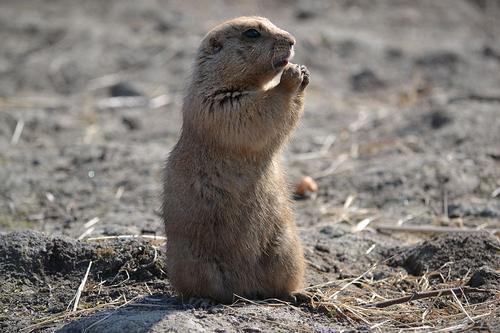
Grasslands National Park, a prairie area with mixed grasses (over forty species), is home to many rare species, including the short-horned lizard, a number of raptor species, ground squirrels, gaff antelopes, mule deer, rabbit owls, and Canada's only colony of black-tailed prairie dogs. The Frenchman River Valley is the last remaining habitat of the black-tailed prairie dog in Canada. The Cypress Hills Interprovincial Park features moose, elk, and white-tailed deer, as well as over 200 migratory species of birds, such as the rare trumpet swan and the rock mountain tit.
The southern part of Prince Albert National Park is a park landscape with aspens, intersected by strips of prairie grass: ground squirrels and a herd of prairie bison live here. In the northern part, the park landscape turns into a boreal forest of spruce, American larch and pine trees - the habitat of wolves, black bears, otters and foxes. The beaver stock has recovered well in recent years.
Lavallée Lake is no longer accessible to protect the white pelicans.
The plant symbol of Saskatchewan is the prairie lily.
YUKON TERRITORY
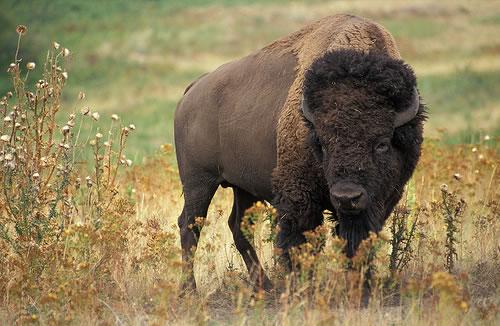
The Yukon Wildlife Reserve is home to moose, bison, wapiti, caribou, mountain goats, deer, and musk ox.
Hundreds of thousands of waterfowl inhabit the many lakes and ponds in the Vuntut National Park each fall. Every spring a herd of about 200,000 caribou migrates through this area, on the way to the north where the calves are born.
The Yukon Territory plant symbol is the fireweed.
Sources
Canada
The Reader’s Digest
Canada
Cambium
Heetvelt, A. / Canada
ANWB
Ivory, M. / Canada
Kosmos-Z&K
Jepson, T. / Canada
Van Reemst
Njio, F. / Canada
Kosmos-Z&K
Roy, G. / North Canada
Bradt Wal, C.P.F. van der / Canada van A tot Z : praktische informatie over wonen en werken in Canada
DEN, Stichting Dienstverlening Emigratie Nederland
Weber, Wolfgang R. / West-Canada : Alberta, British Columbia
Lannoo
Zuilen, A.J. van / Gids voor Canada
Gottmer
CIA - World Factbook
BBC - Country Profiles
Copyright: Team The World of Info